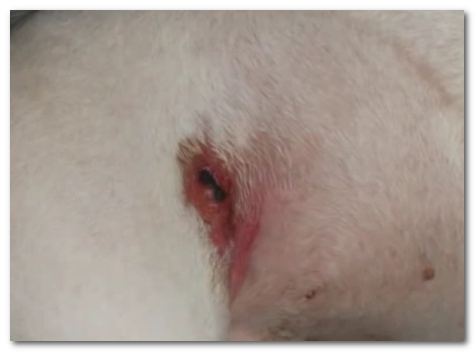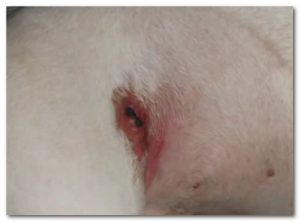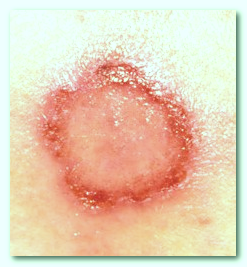Spider bites on dogs are difficult to deal with. First of all, it’s almost impossible to know that a spider has bitten a dog unless the dog’s owner actually sees the spider on the dog, then finds a welt in the same spot. Dealing with spider bites on dogs can be quite tricky and in most cases, you can almost never know that it is a spider bite. On top of that, there is no good test in existence to discern whether a bite on a dog is arising from a spider, and the same is likely the case in determining the kind of spider, which may have bitten the dog.
How do dogs react to a spider bite?
Sometimes, what you may find on the dog is a puncture mark. Not many spider bites will warrant a trip to a veterinary clinic and at times, most dogs will not have problems after being bitten by a spider. The two commonly known spiders that may cause adverse reactions in a dog are the black widow and brown recluse spiders. These are quite venous spiders and they can trigger reactions that may require a dog to be taken for treatment.
Nonetheless, majority of dogs will still not show any reactions after they are pierced or injected with venom by these spiders. The reason behind the ability for a dog to experience a reaction or not may not clearly be understood. There is no clear explanation as to why some dogs will reach severely to spider bites while others may not react to the same spider bites. However, it is thought that dogs having compromised immune systems may be more susceptible to the reaction of the bites.
The spiders will be found in areas that are not disturbed such as the fences, eaves, woodpiles, or any debris that piles up around a home, according to Centers for Disease Control and Prevention-CDC. Although in humans, black widow spider will leave some obvious mark consisting of two punctures; this is not typically the case with dogs.
Such marks are not easily found on spider bites on dogs. The brown recluse spider appears brown in color and is at times referred to as the violin spider due to the dark shape on the heads, which resemble a fiddle or violin. The CDC hints that brown recluses tend to have six equal- sized eyes contrary to most spider that have eight eyes. In homes, these spiders tend to weave webs in dry secluded and sheltered areas for instance underneath structural logs, in debris of leaves, or in piles of rocks.
Inside a house, they can build their nest in the attic, in a shoe, or some dark closet. The recluse spider will require pressure against its body for it to bite. The pressure may be created when a dog happens to lie down on the spider. This is the way many dogs are bitten by spiders.
Symptoms of a spider bite on a dog
Owners of dogs often may not know if their dogs have actually been bitten by a spider. Some dogs will scratch and lick at the site of bite when they feel pain. Others will get bitten but go along with their routine and you may not notice any kind of reaction. At first, behavioral reactions to a spider bite like licking or scratching may be the only indications that a dog has been bitten.
It also depends on whether a spider had the change to inject more venom in the body of the dog. A dog that reacts to the bite may show pain. The pain may come after several hours. A black widow spider bite on a dog will show severe pain in dogs that are reactive and there may be some swelling. The dog may cry when touched. It may stop eating, not as active, and does not want to move. It may also pant and shake, and if sufficient venom was injected, the dog’s muscles may experience cramping and pain could spread to entire body.
It is that pain which prompts many dog owners to take their dogs to a veterinary clinic. A spider bite on dog caused by brown recluse will show symptoms such as redness, blistering, and swelling. The skin may turn black as the cells die. You need to seek treatment for the dog when you notice these symptoms.
Treatment of spider bites on dogs
Once a dog has been bitten by a spider, depending on whether it reacts or it doesn’t, treatment may be needed. Pain medication is needed as well as supportive care for any kind of complications, which may develop. Antibiotics may be administered to treat the skin complications. Dogs will show different reactions and complications. Veterinary doctors will treat the dogs depending on the reactions and complications they have.



Hey there, I seriously like your amazing internet site! This is a nice posting. My family and i look forward to reading more exciting information in which youll be publishing within the forthcoming. Weve found out a lot by this. Thanks a ton. -Olene Griffins